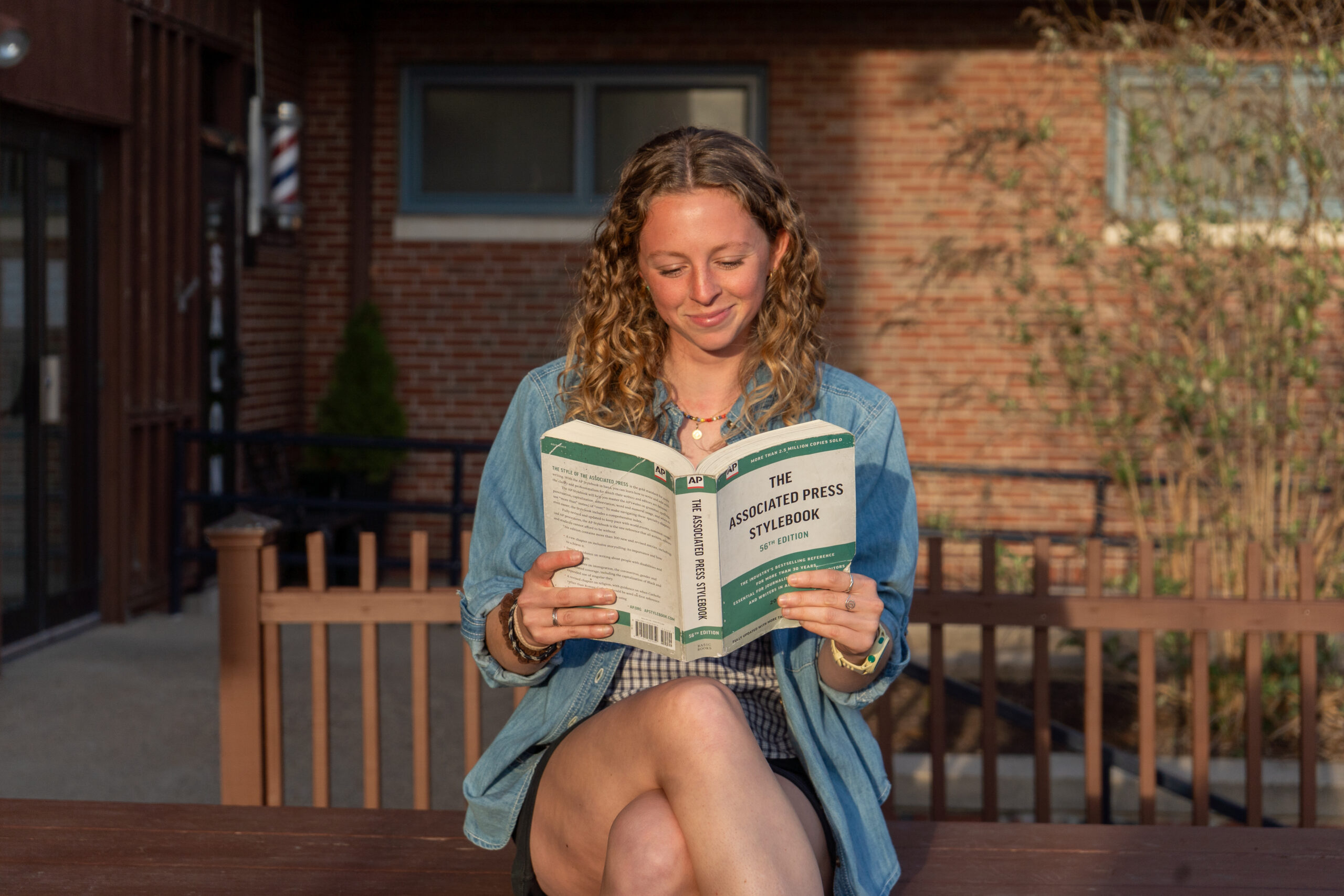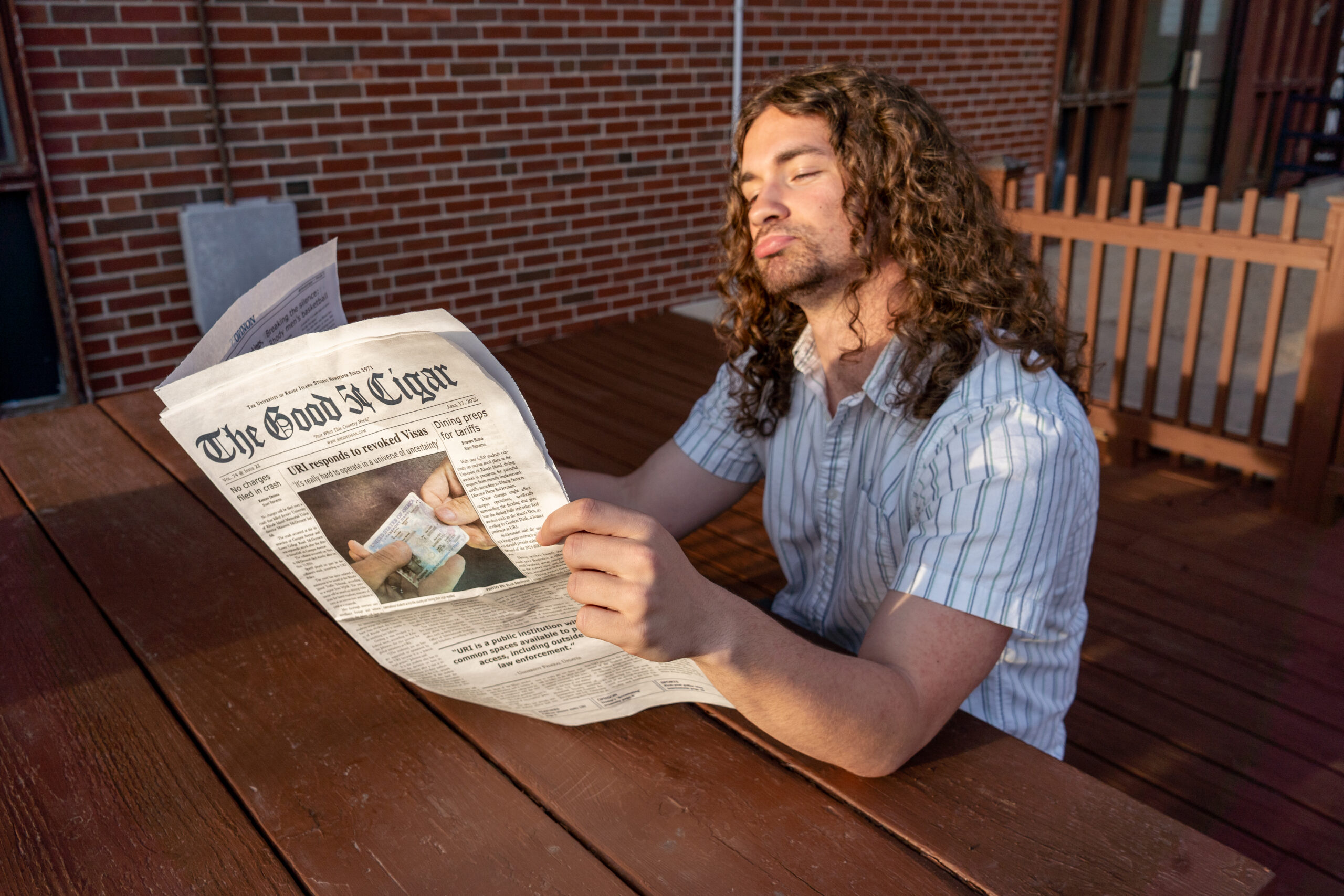On Nov. 14 in the library, the New MakerSpace hosted a workshop focusing on the necessary skills required to make a podcast.
Lena Bohman, a Makerspace Facilitator who graduated from Brown last May, hosted the workshop. Bohman decided not to focus on the skill of interviewing.
“URI students don’t need to learn how to interview,” Bohman said. “There are more than enough journalism classes. But what students really need is to learn the best practices for recording.”
The Good Five Cent Cigar has discussed before how podcasts are an essential part of our current media landscape, as everyone seems to have a podcast. They speak to their audience in a way that the written word simply cannot. As Bohman puts it, they are, “audio stories that connect to people.”
Bohman used the example of a very famous podcast, “StoryCorps,” that has an episode that simply follows the daily life of a New York sanitation worker. “There is no voice-over, no narration,” she said. “It’s just a man taking the audience through a tour of his day, with sound effects and real-life conversations. And yet it captivates you.”
The workshop was split into three sections, which included best practices for recording, editing and resources.
“The dampening of echo is more important than the type of microphone you use,” Bohman said. “You can use your phone and get better audio, than someone with high tech mics, if you know what you’re doing.”
The main thing that was noted to remember was to keep the microphone close enough to amplify your voice but not too close for it to catch every breath and cough. This distance is typically about six inches away from your face.
If you are using a phone to record, remember to move the phone between both talkers so that the audio levels are equal for the interviewer and interviewee. Lastly, it’s important to find a place to record that has little outside noise, as well as little echo. “A small closet filled with lots of blankets,” Bohman said.
Bohman also demonstrated how to edit. She used the software Audacity, a free audio editing software that can be downloaded onto any computer. Bohman explained the importance of keeping audio levels consistent, between six and 12 decibels. Moments of abnormally low or, excruciatingly high volume can be jarring to the listener and would negate the benefits afforded by the medium of podcasting.
Bohman also explained how one can edit recordings of a silent room into the podcast to create emphasis or to slow down a conversation, in a process identical to the cinematic technique of recording room tone.
Finally, Bohman listed some further resources for those wanting to make their own podcast. In addition to the Audacity software, there is an Audacity wiki that contains all the tutorials you could ever need to master the software, which include tutorials such as, “How to Mix voices with Background Music.”
Bohman also explained that Free Music Archive and FreeSound are both places one can download public domain music for free, to be used in any project they needed to.
The importance of podcasts in our culture was expressed in the diversity of the audience. These include a senior who is planning on making a podcast for her spring honors project, to people like Shaun Kirby, the communications coordinator for Established Program to Stimulate Competitive Research (EPSCOR), a grant-funded program that funds marine biology research, including URI graduate students.
As the Communications Coordinator, Kirby is tasked with getting the word out about the research that is going on. He came to the workshop because he wanted to create a series of interviews with the researchers to help get the word out. Even though he was the former editor at the Narragansett Times with experience in curating media, podcasting was a medium that is unfamiliar to him. However, this workshop gave him the necessary foundation to get to work making his podcast.



